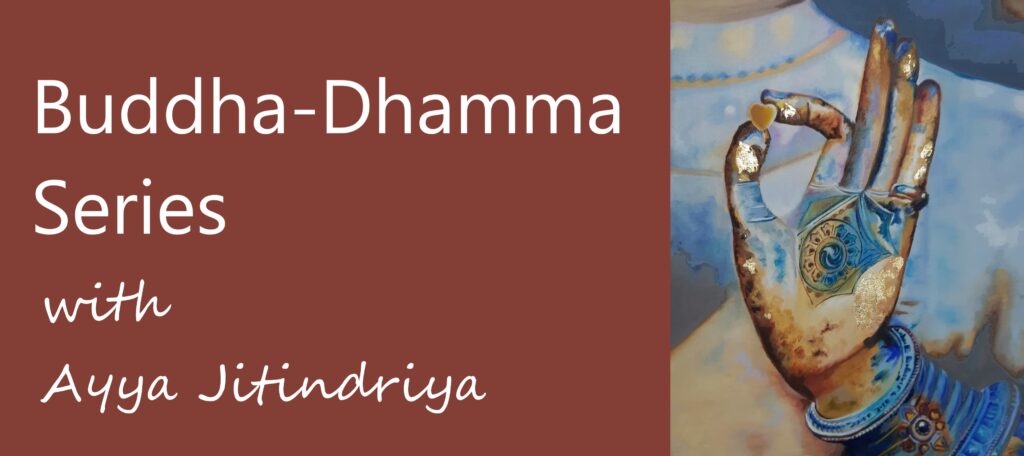
Dear Friends,
We’re introducing a new six-part series live on YouTube, beginning in May, in which Ayya Jitindriyā will discuss some of the key contemplative paradigms and practices in Early Buddhism. These sessions will take place every six weeks and replace one of the usual fortnightly guided meditations we offer — so that means every third session will be a Buddha-Dhamma session (streaming on the same ‘Wisdom of the Masters’ channel as our regular guided meditations). A link to the playlist is provided below.
Each session will include a guided meditation, a talk from Ayya Jitindriyā, and an opportunity for Q&A, and will go for approx. 2hrs or so. The series is not intended to be an exhaustive academic education on the subject of early Buddhism, but rather a lively extemporaneous reflection on some of the key contemplative paradigms as taught by the Buddha, how we can apply them in practice, and what purpose they serve with regard to eliciting insight and freeing the mind from unnecessary cycles of suffering.
In each session Ayya Jitindriyā will address a different aspect of practice, including but not limited to:
– The liberating insights of the Four Ariya Sacca (Noble Truths)
– The Eight-fold Path, the Way of non-suffering (or, view, conduct & meditation)
– Samsara (cyclic suffering), karma (kamma) and the end of karma
– The five aggregates affected by clinging, or ‘personality factors’
– The three characteristics of all conditioned existence
– The five hindrances to meditation, samadhi, and the enlightenment factors
– The four foundations, or placements of mindfulness
– Nibbāna (skt: Nirvana), the ‘deathless’, ’emptiness’ and liberation…
All are welcome to attend, whether new or experienced in practice; if you can’t come along to the live sessions, they’ll be archived for later viewing on YouTube, and linked to on this website as well.
Here’s a link to the playlist: Buddha-Dhamma Series
See you there!
A brief bio of Ayya Jitindriyā
Credit: the image used above is from an original artwork entitled ‘Buddha Hand’ by Arundhati Warrier

